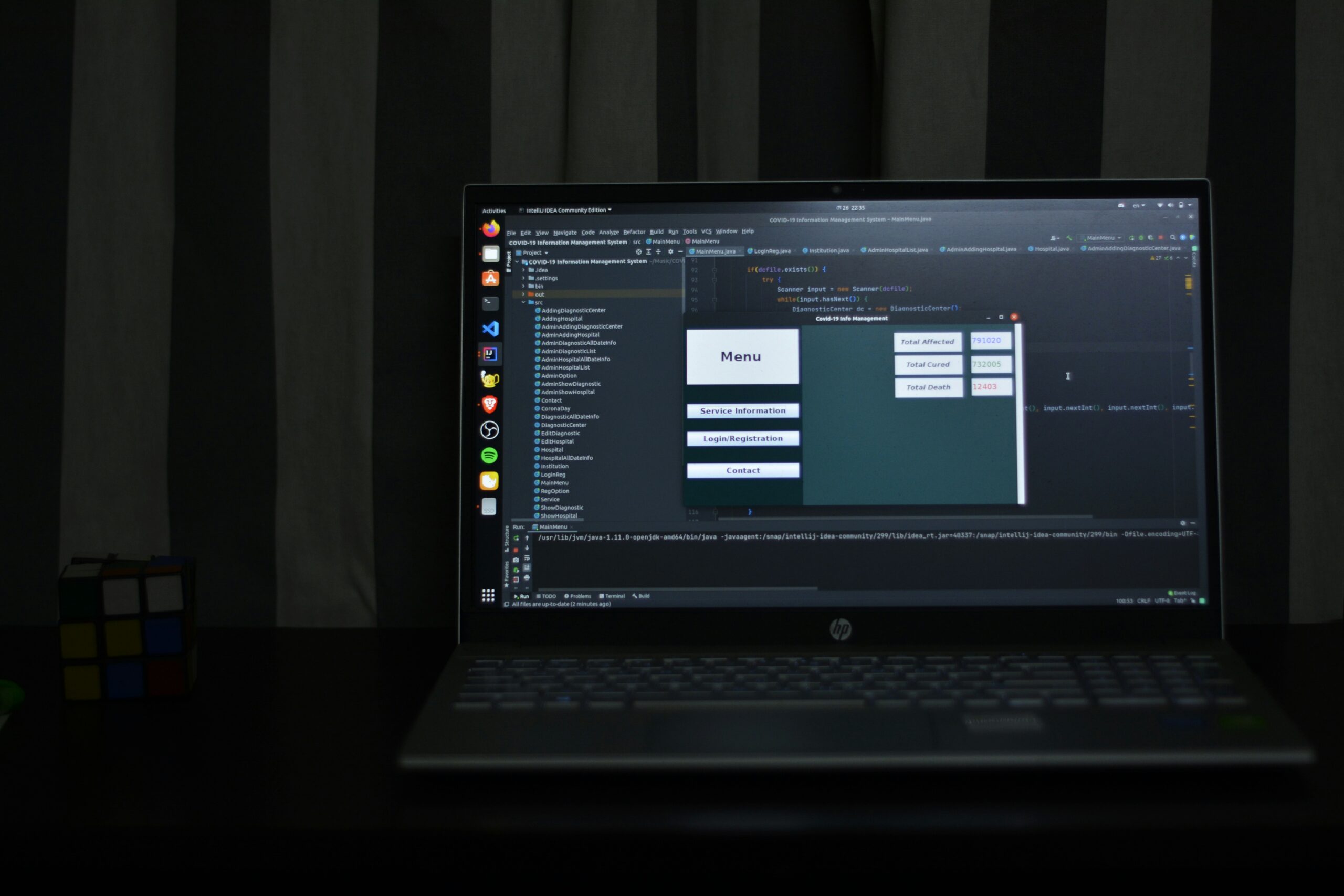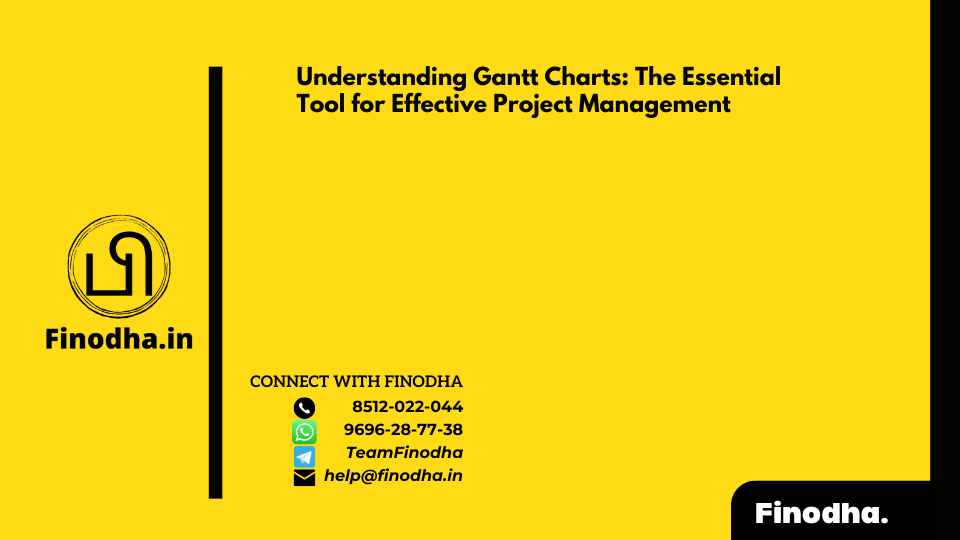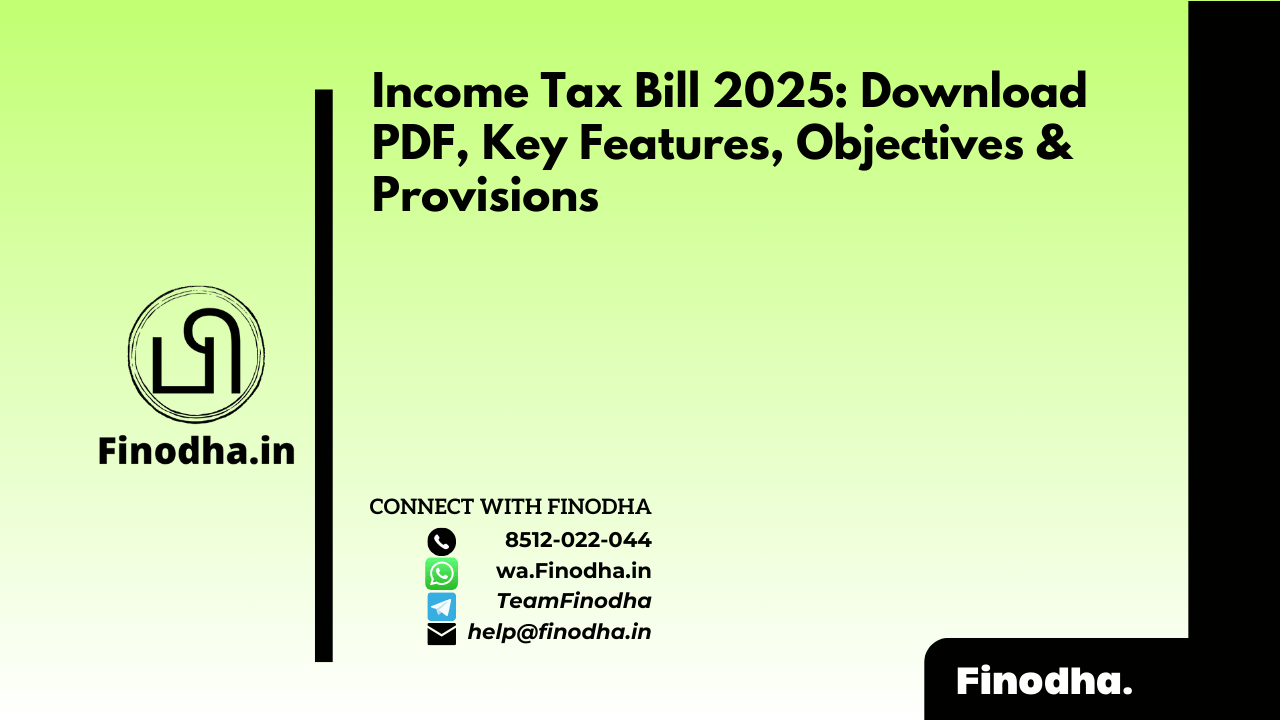Important Keyword: Gantt Charts, How to read a Gantt Chart, Gantt Chart History, Project Scheduling Tool.
Table of Contents

Introduction to Gantt Charts
Gantt charts are a fundamental tool in project management that visually represent project schedules, making them an indispensable resource for planners and teams. Developed by the American engineer and management consultant Henry Gantt in the early 20th century, these charts have evolved significantly over the years but maintain the core purpose of simplifying complex project timelines into clear and concise visuals. Gantt’s work focused on optimizing efficiency in industrial operations, and his charts quickly became an essential aspect of project planning and execution.
Historically, Gantt charts emerged during a time of rapid industrialization when projects were becoming increasingly complex. They provided a graphical illustration of tasks, their duration, and their relationships, enabling managers to visualize the flow of work and identify potential bottlenecks. This innovation allowed teams to better communicate project status and progress, thus improving overall collaboration among stakeholders. The simplicity of a Gantt chart—representing tasks along a timeline through bars—enabled those involved to easily comprehend the sequence and duration of each task at a glance.
In modern project management, Gantt charts continue to be relevant, adapting to various methodologies, including Agile and Waterfall. These charts are now frequently integrated into software tools, making it easier for teams to create and manage project timelines. The digital evolution of Gantt charts offers additional functionalities, such as resource allocation, task dependency mapping, and real-time updates, thus enhancing their utility in contemporary project management. As organizations strive to improve efficiency and productivity, Gantt charts remain a staple in the toolkit of effective project managers, facilitating the effective tracking and management of projects from inception to completion.
The Origin of Gantt Charts
The concept of Gantt charts traces back to the innovative work of Henry Gantt, an American mechanical engineer and management consultant, in the early 20th century. His contributions emerged during a period characterized by industrial growth and the rise of scientific management techniques. Gantt sought to create tools that would improve efficiency in production processes, which were crucial for meeting the demands of rapidly expanding industries.
In 1910, Gantt introduced his eponymous chart as a visual representation of a project’s schedule. This tool allowed managers to break down complex projects into various tasks and represent their timelines visually. It became evident that traditional methods of project management, which often relied on extensive textual documentation, were inadequate for effectively tracking progress and resource allocation. The Gantt chart addressed this gap, offering a clear and concise way to visualize tasks along a timeline.
Beyond mere aesthetics, the primary motivation behind the creation of Gantt charts was to enhance accountability and communication among project stakeholders. By allowing team members to see task durations and progress, Gantt aimed to foster collaboration and ensure that everyone was aligned towards common project objectives. His work was rooted in the belief that effective planning and scheduling were fundamental to managing resources efficiently.
Over the decades, Gantt charts have undergone significant evolution. Initially used predominantly in manufacturing and engineering disciplines, their application has expanded to encompass various sectors, including software development, construction, and healthcare. The advent of project management software has further revolutionized Gantt charts, enabling features such as real-time updates and task dependencies. Today, Gantt charts stand as a pivotal asset in project management, supporting teams in visualizing complex workflows and enhancing overall project delivery.
Components of a Gantt Chart
A Gantt chart is a vital project management tool that visually represents the timeline of a project. It consists of several key components, each serving a distinct purpose in ensuring effective scheduling and tracking of project progress. The primary components of a Gantt chart include activities, timelines, resources, and targets, which collaboratively provide a comprehensive overview of the project’s status.
Firstly, activities represent the tasks involved in the project. Each activity is typically displayed as a horizontal bar along the timeline, with its length correlating to the duration necessary for its completion. This visual representation helps project managers identify overlapping tasks and dependencies, aiding in optimal resource allocation.
The next essential component is the timeline, which runs along the top of the Gantt chart. It represents the overall timeframe of the project, broken down into smaller segments, such as days, weeks, or months. The timeline allows stakeholders to grasp critical milestones and deadlines, fostering better time management throughout the project’s lifecycle.
Resources are another critical element found in Gantt charts. They refer to the personnel, equipment, and materials assigned to each activity. By clearly indicating which resources are allocated to specific tasks, project managers can efficiently monitor resource utilization and make adjustments as necessary to maintain project momentum.
Lastly, targets, typically indicated by milestone markers, highlight key objectives within the project. These targets serve as checkpoints, allowing teams to evaluate whether the project is on track and to identify potential delays early. By integrating activities, timelines, resources, and targets, Gantt charts create a cohesive view of the project’s progress, essential for effective project management.
Understanding how to Read a Gantt Chart
Gantt charts are pivotal in effective project management, offering a visual representation of a project’s timeline and activities. The fundamental structure of a Gantt chart consists of horizontal bars that represent the duration of tasks along a timeline. The horizontal axis typically displays the timeframe of the project, which can range from days to months or even years depending on the project’s scope. The vertical axis lists all the tasks or activities that need to be completed. Each horizontal bar corresponds to a specific task, with its length indicating the duration of that task.
To effectively read and analyze a Gantt chart, one must pay close attention to several key elements. The start date of each task is marked at the left end of the bar, while the right end denotes the completion date. This allows project managers and team members to quickly ascertain when each task is scheduled to start and when it is expected to finish. Understanding the duration of tasks is essential, as it provides insights into the overall project timeline and resource allocation.
Progress monitoring is another critical aspect of reading a Gantt chart. Many Gantt charts incorporate a visual element, such as shading or color changes along the task bars, to indicate the percentage of completion for each task. This provides an immediate visual cue about what has been accomplished and what remains to be completed. Furthermore, any dependencies between tasks—where certain tasks must be finished before others can begin—are typically indicated by arrows connecting the bars. By recognizing these dependencies, project managers can make informed decisions about scheduling and resource management, ensuring that the project remains on track.
Advantages and Disadvantages of Gantt Charts
Gantt charts serve as an essential tool in project management due to their ability to provide clear visualization of tasks, timelines, and resources. One of the primary advantages of utilizing Gantt charts is their straightforward representation of project schedules. This visual tool allows team members and stakeholders to understand the sequence of tasks at a glance, making it easier to track deadlines and progress. Additionally, Gantt charts offer a simple way to allocate resources effectively, assisting project managers in identifying who is responsible for specific tasks, and ensuring that workloads are balanced.
Another key benefit is the enhanced communication they promote. By having a visual timeline, project members can grasp the project’s status and potential bottlenecks, leading to improved collaboration. Gantt charts can also be beneficial in setting realistic expectations for project completion, as they provide insights into task dependencies and overall project duration. Furthermore, their progress tracking feature allows for timely adjustments to be made if a task falls behind schedule, which is crucial for maintaining project timelines.
Despite their benefits, Gantt charts also present some disadvantages, particularly in larger and more complex projects. For instance, the chart may become cluttered and difficult to interpret when numerous tasks and resources are involved. This complexity can hinder the effectiveness of Gantt charts in clearly conveying project information. Moreover, Gantt charts may struggle to adapt to changes, such as shifts in timelines or resource availability. The rigid structure of Gantt charts may lead to challenges in accurately reflecting real-time updates, which can frustrate project teams. Consequently, while Gantt charts are a powerful project management tool, practitioners should weigh both their advantages and disadvantages carefully to determine their best utility in varying project contexts.
Real-World Applications of Gantt Charts
Gantt charts serve as a crucial tool across various industries, offering clear visualization of project timelines, tasks, and dependencies. In the construction sector, for instance, project managers rely heavily on Gantt charts to schedule activities, allocate resources efficiently, and track progress. The complexity and scale of construction projects necessitate precise planning, making Gantt charts invaluable for ensuring that deadlines are met while coordinating multiple subcontractors and suppliers.
In the realm of software development, Agile and Scrum methodologies have adopted Gantt charts to streamline workflows and maintain transparency. These charts are utilized to outline project phases, feature deliveries, and integration points. With multiple development cycles often occurring simultaneously, Gantt charts help teams visualize the interdependencies among tasks, enabling them to adjust priorities and maintain an efficient timeline for project completion. This is particularly beneficial for projects ranging from small mobile applications to large enterprise software systems.
Pharmaceutical research also demonstrates the power and flexibility of Gantt charts. In clinical trials, researchers can use these charts to manage timelines from the initial research phase through to regulatory approval. By breaking down complex processes into manageable tasks, Gantt charts aid in identifying potential risks and scheduling critical deadlines, such as patient recruitment and data analysis phases. This allows researchers to remain on schedule, ensuring compliance with stringent regulations and enhancing the overall efficacy of drug development.
Furthermore, Gantt charts can benefit organizations of all sizes. Smaller projects, such as marketing campaigns or event planning, can utilize Gantt charts to organize timelines and milestones effectively. In summary, the versatility of Gantt charts across various industries and project scales makes them an indispensable tool for effective project management, fostering communication and collaboration among teams while driving projects toward successful completion.
Using Project Management Tools for Gantt Charts
Creating Gantt charts can be streamlined by utilizing various project management tools and software that are designed to simplify this process. Two popular tools that cater to a wide range of users, from novices to seasoned project managers, are SharePoint and Microsoft Excel. These platforms provide essential features that enhance the usability and effectiveness of Gantt charts.
SharePoint, known for its collaborative capabilities, allows teams to create and manage Gantt charts in a shared environment. Users can benefit from real-time updates and the ability to allocate tasks, set deadlines, and monitor progress collectively. This is particularly valuable for organizations that emphasize teamwork and communication in project management. The integration with Microsoft Project elevates SharePoint’s functionality, providing additional resources for managing complex projects seamlessly.
On the other hand, Microsoft Excel is a versatile spreadsheet tool that many users are already familiar with. Its flexibility allows project managers to design customized Gantt charts tailored to specific project needs. By utilizing simple formulas, users can visualize the project timeline effectively. Excel’s grid layout makes it easy to adjust timelines and dependencies, providing an intuitive approach to Gantt chart development. For those who may not require advanced functionalities, Excel serves as a practical starting point.
Beyond SharePoint and Excel, numerous other project management tools exist, such as Trello, Asana, and Smartsheet, each offering unique features for the creation of Gantt charts. These tools often include templates and pre-designed elements that can make the initial setup faster, catering to users with varying levels of experience. The ability to integrate project tracking, resource management, and timelines into a single interface significantly enhances overall project organization.
In summary, utilizing project management tools for Gantt charts significantly facilitates the planning and monitoring of projects, enabling users to optimize their workflow regardless of their expertise level.
Common Questions about Gantt Charts
Gantt charts are widely utilized in project management, yet various misconceptions and questions often arise regarding their functionality and application. One of the most common inquiries is, “What exactly is a Gantt chart?” Simply put, a Gantt chart is a visual representation that outlines a project timeline, showcasing tasks or activities along with their expected duration and sequencing. This unique tool allows project managers to easily track progress and monitor deadlines, thereby making it indispensable for effective management.
Another frequent question revolves around the ideal number of tasks to display on a Gantt chart. While there are no strict limitations, it is crucial to strike a balance between clarity and detail. Attempting to represent too many tasks can lead to clutter, rendering the chart less effective in conveying important information. It is recommended to focus on key milestones and major deliverables, ensuring that the chart remains easily interpretable.
Individuals often wonder about the best software tools for creating Gantt charts. Numerous software options are available, ranging from dedicated project management tools like Microsoft Project to simpler online alternatives such as Trello or Asana. The choice of software ultimately depends on the specific requirements of the project and the familiarity of the team members with the tool.
Additionally, some may ask about the practicality of Gantt charts in agile project management environments. Though Gantt charts are traditionally associated with waterfall project methodologies, their adaptability makes them beneficial in agile settings as well, especially when visualizing project timelines and major deliverables.
By addressing these common questions, individuals can gain a clearer understanding of Gantt charts, ultimately enhancing their capacity to utilize this essential tool in project management effectively.
Conclusion
Throughout this discussion, we have delved into the significance of Gantt charts as an indispensable tool in project management. By providing a visual representation of project timelines, these charts enable project managers to oversee multiple tasks and resources effectively. One of the key insights gained is the ability of Gantt charts to enhance communication among team members, allowing for a clearer understanding of responsibilities, deadlines, and interdependencies. Such clarity is crucial in minimizing misunderstandings and ensuring that projects remain on track.
Moreover, Gantt charts facilitate better planning and scheduling by breaking down complex projects into manageable tasks. This breakdown not only aids in accurate time estimation but also ensures that project milestones are strategically positioned throughout the duration of the project. By using Gantt charts, project managers can easily identify potential bottlenecks and allocate resources accordingly, ultimately leading to improved time management and productivity.
It is also notable that Gantt charts are adaptable to various project scenarios, whether you are managing a small team or overseeing a large scale initiative. The versatility of these charts means that they can be used across different industries and project types, proving their universal appeal and effectiveness. As teams increasingly rely on collaborative tools, integrating Gantt charts into project planning software can further enhance their functionality, allowing for real-time updates and adjustments.
In light of these insights, it is essential for project managers and teams to adopt Gantt charts as part of their project management strategy. By leveraging the strengths of Gantt charts, organizations can optimize their project planning efforts, improve overall efficiency, and ultimately maximize project success. Embracing this valuable tool can lead to more streamlined workflows and, therefore, a greater likelihood of achieving project objectives. It is recommended that professionals not only learn about Gantt charts but also actively implement them in their daily project management practices.
Read More: Seeks to extend dates of specified compliances in exercise of powers under section 168A of CGST Act
Web Stories: Seeks to extend dates of specified compliances in exercise of powers under section 168A of CGST Act
Download Pdf: https://taxinformation.cbic.gov.in/




